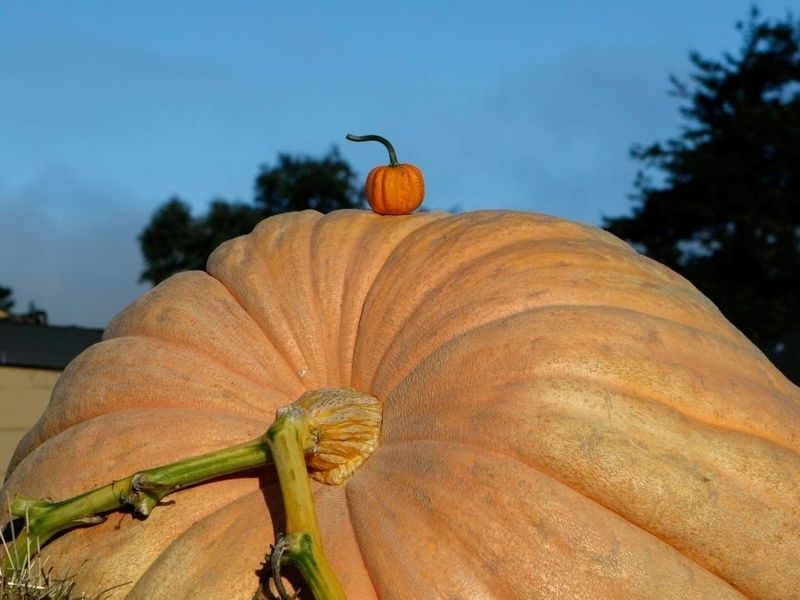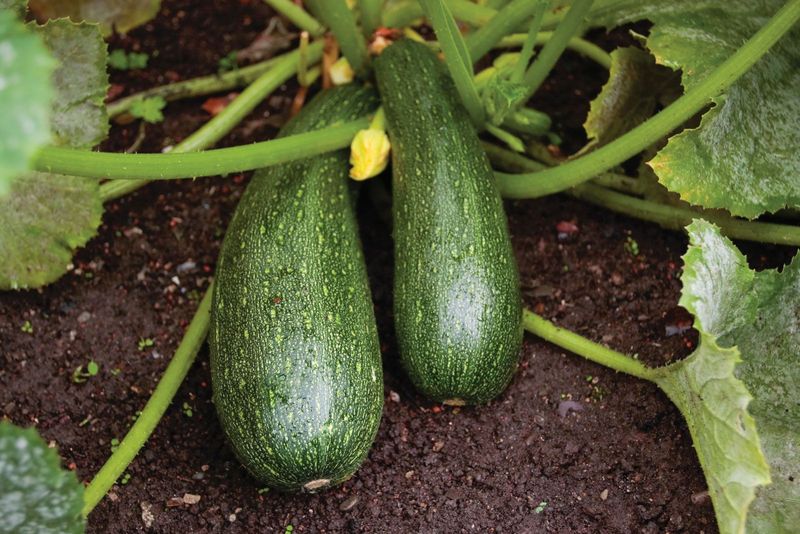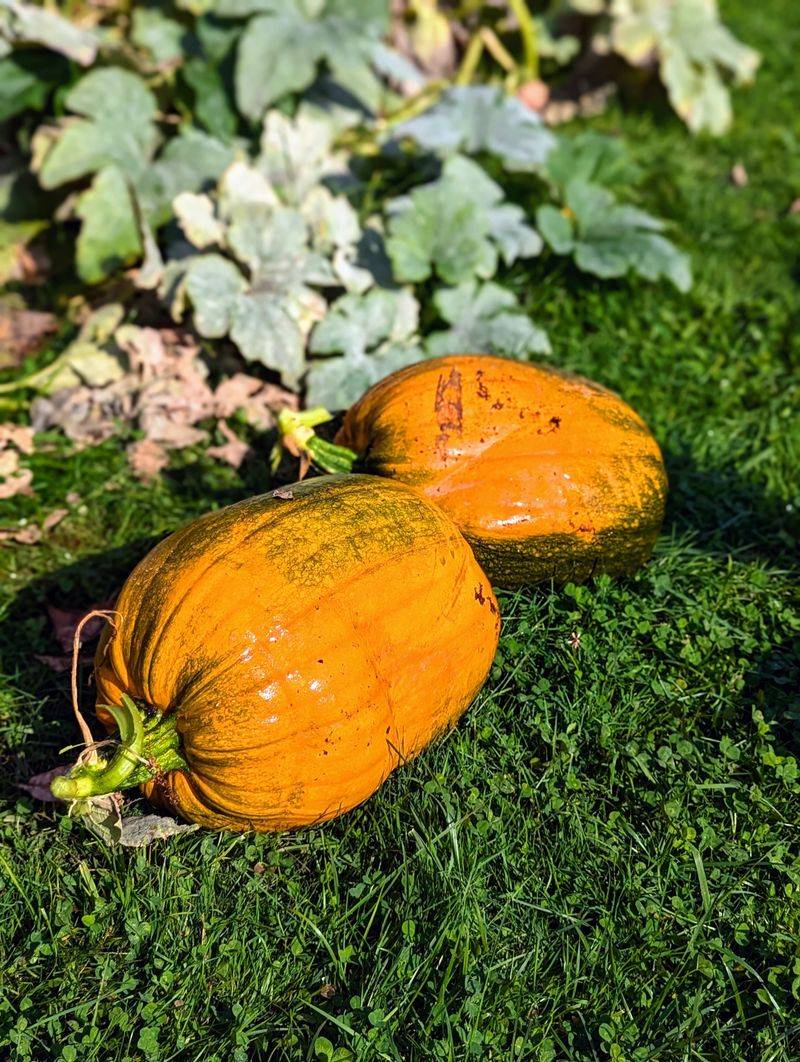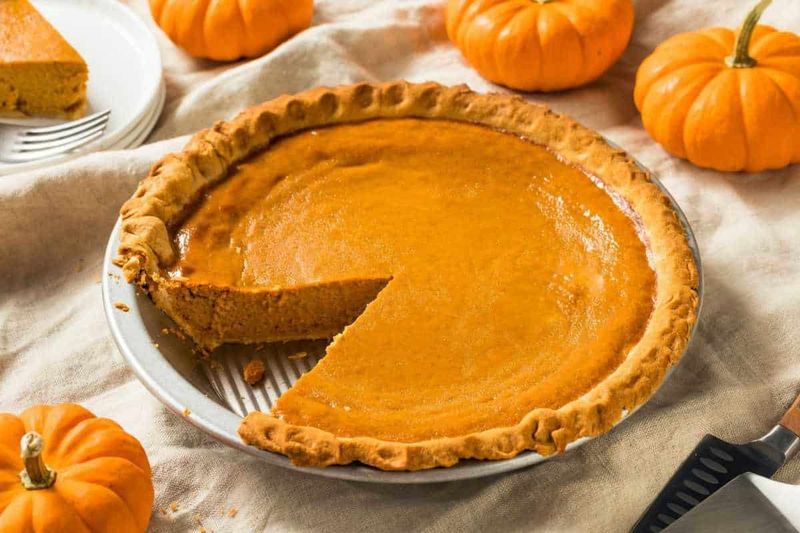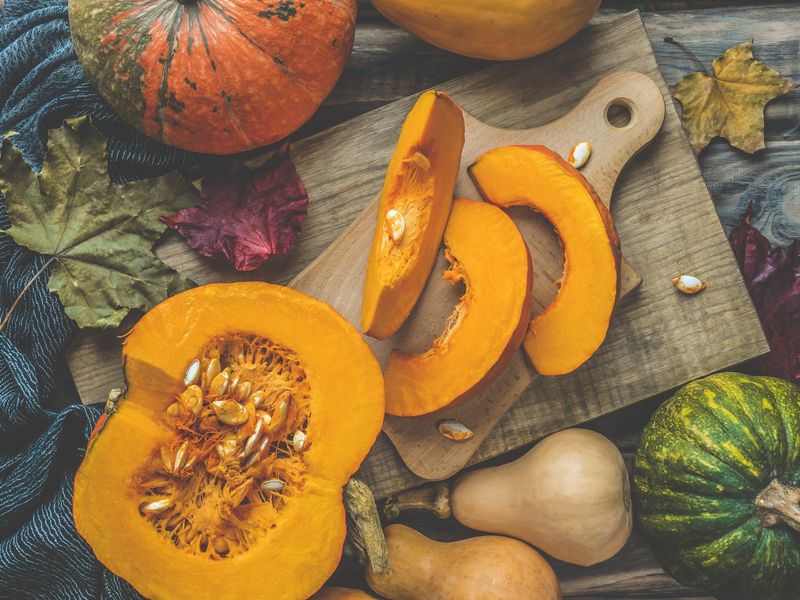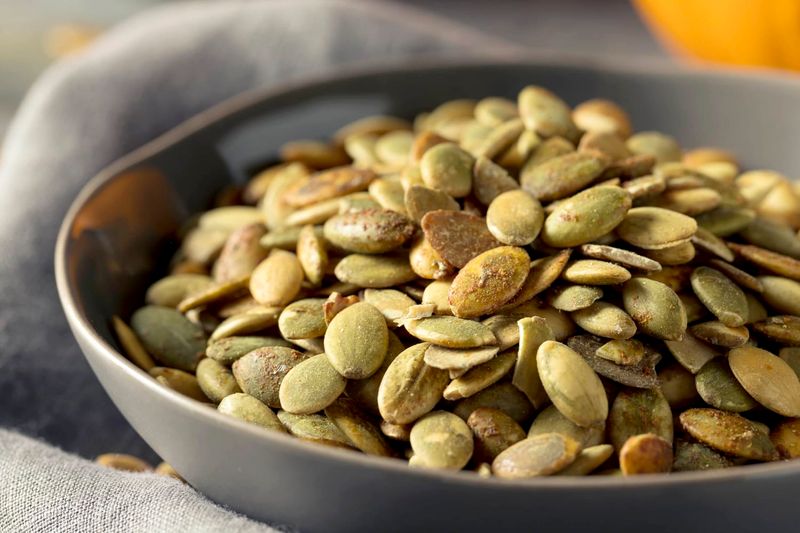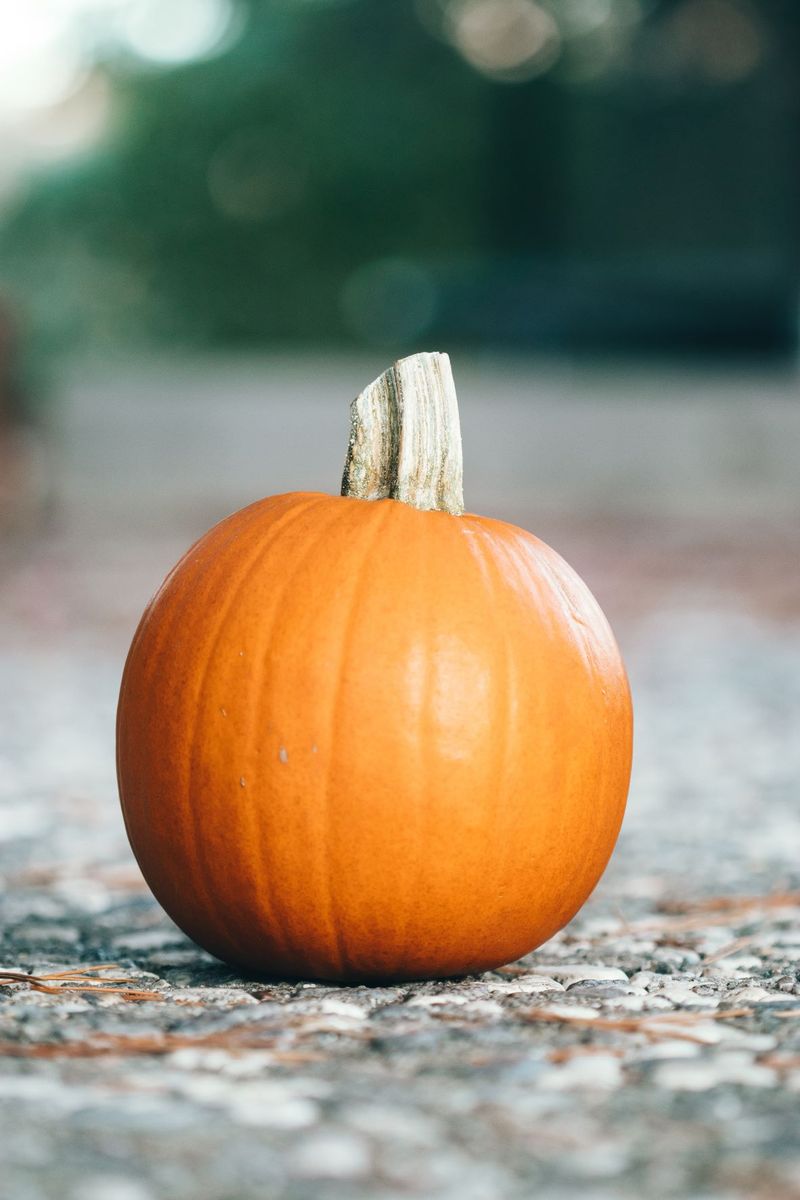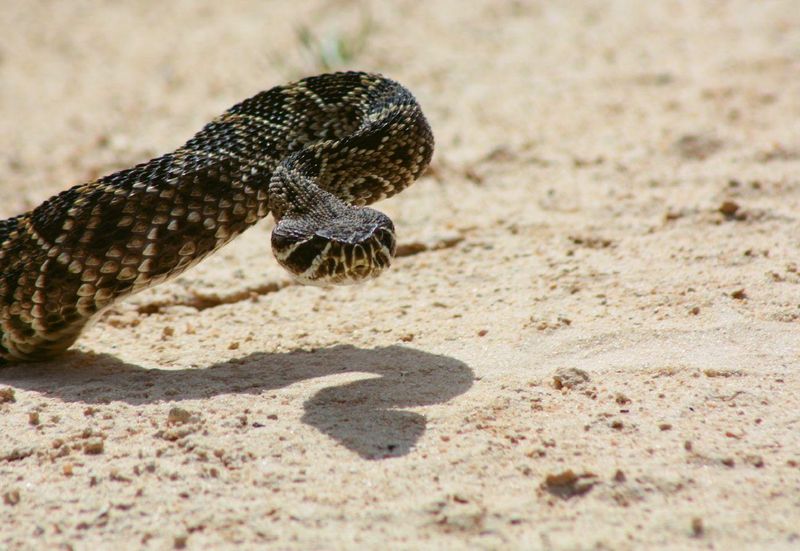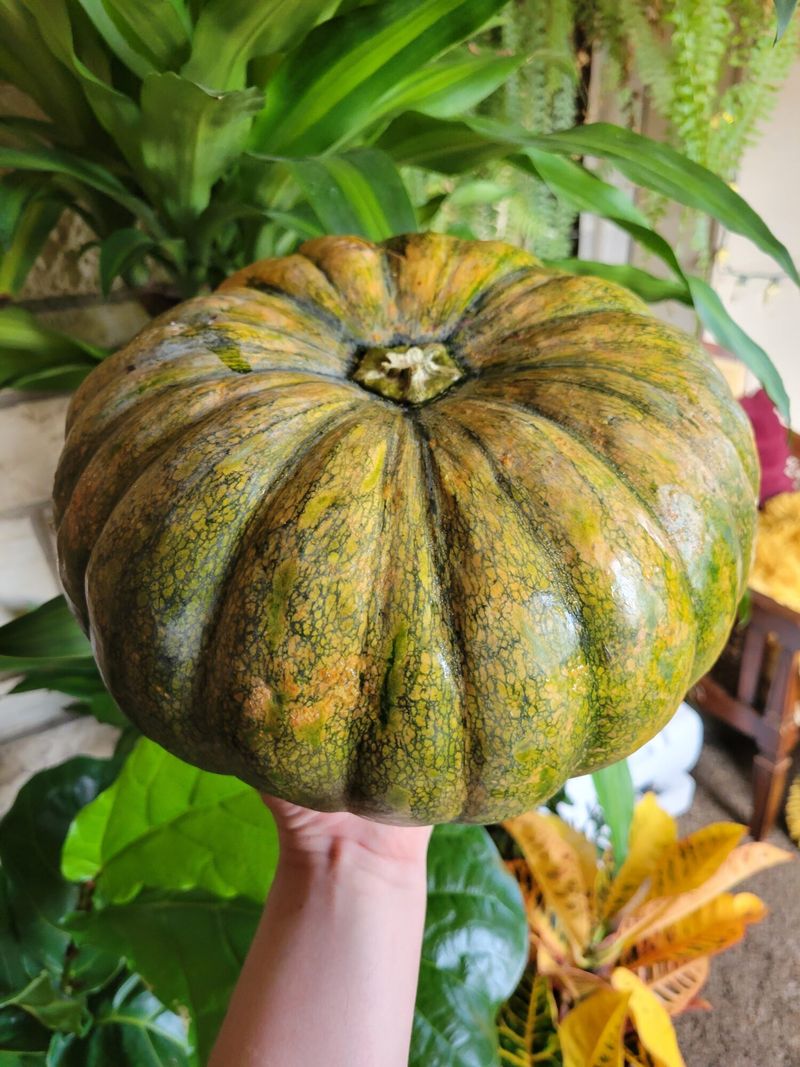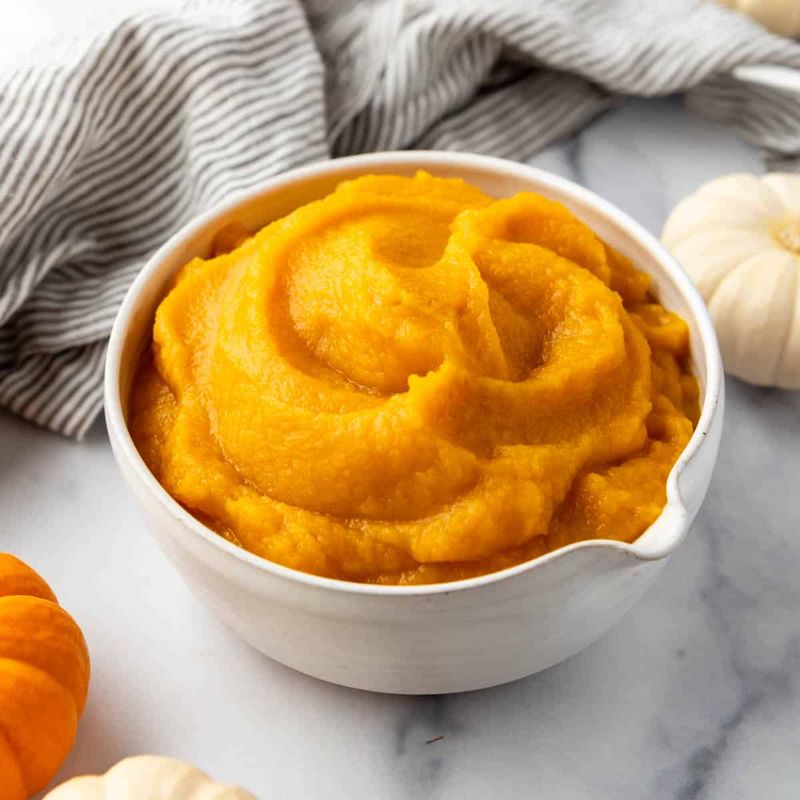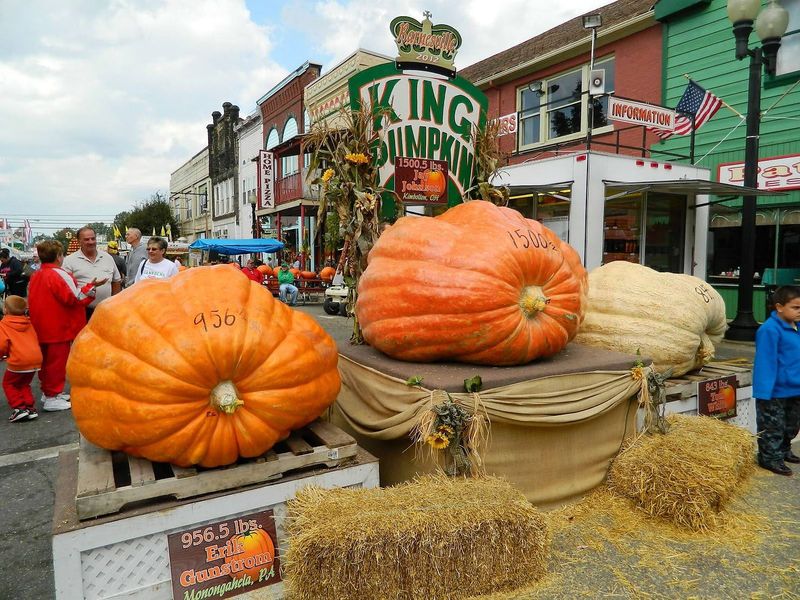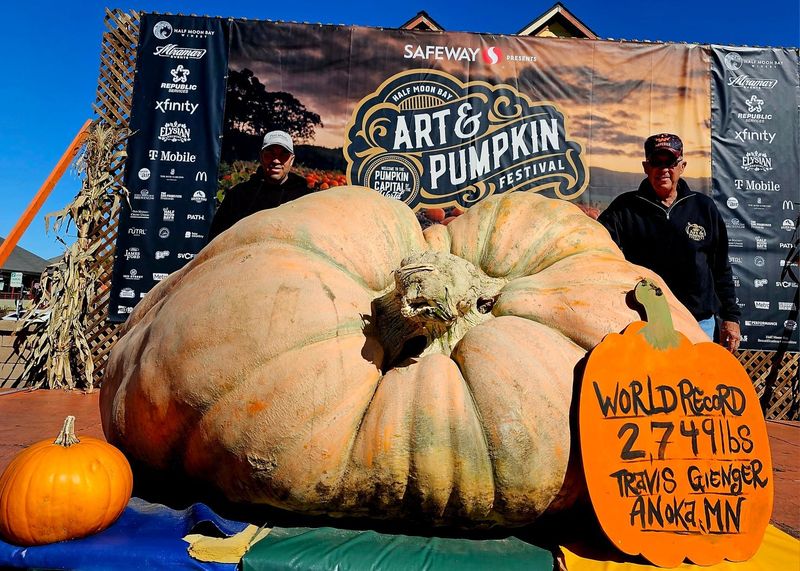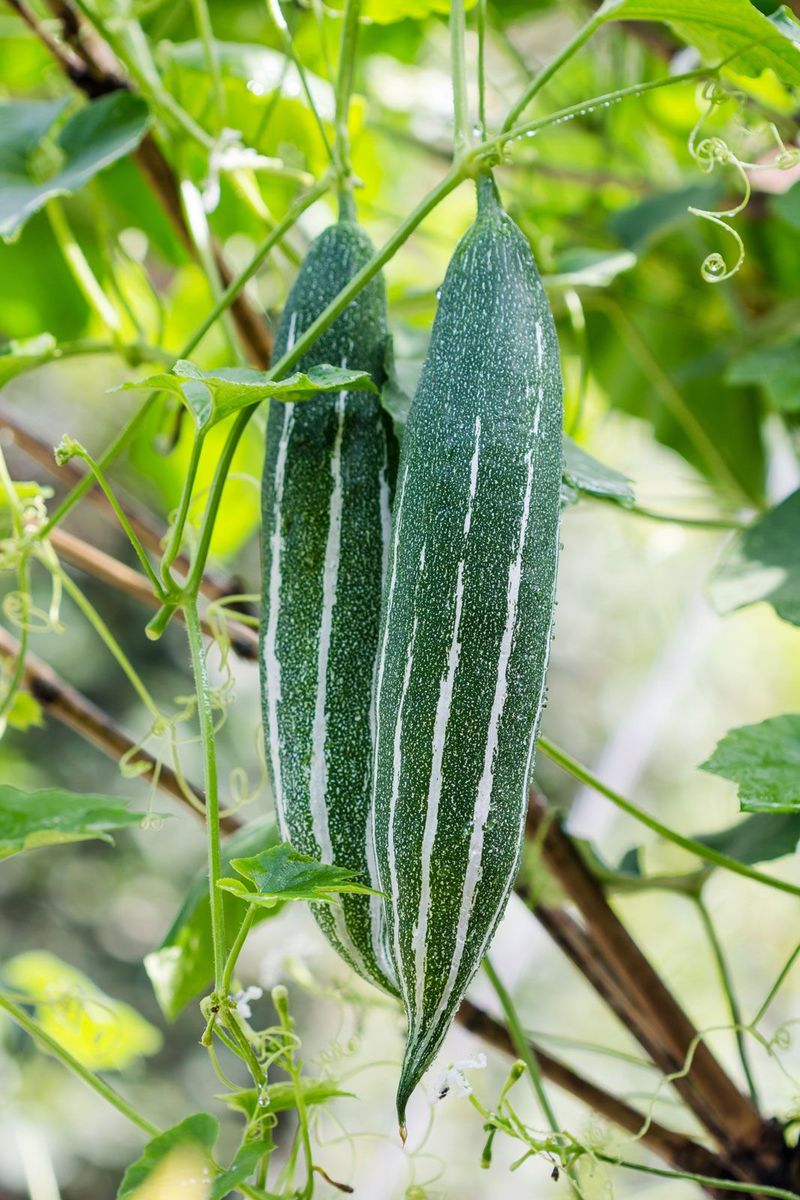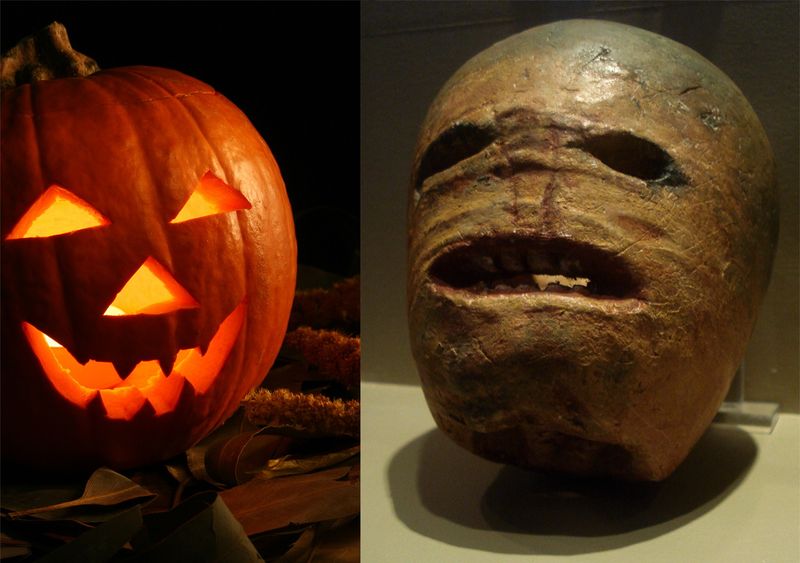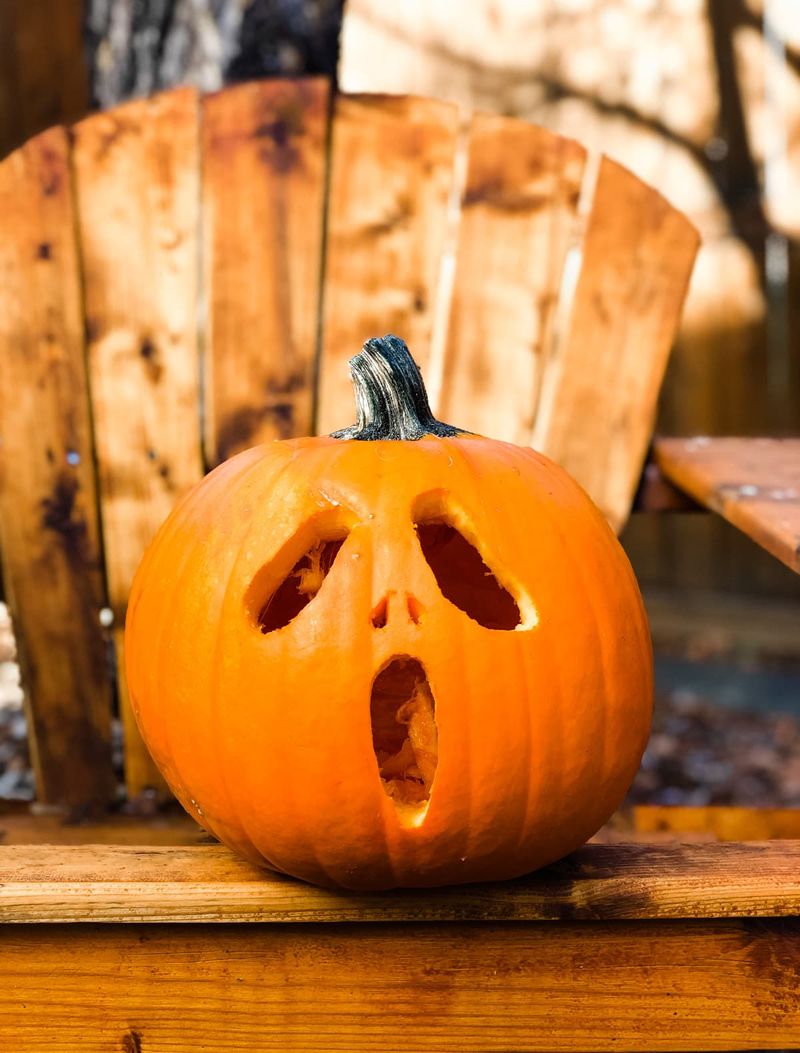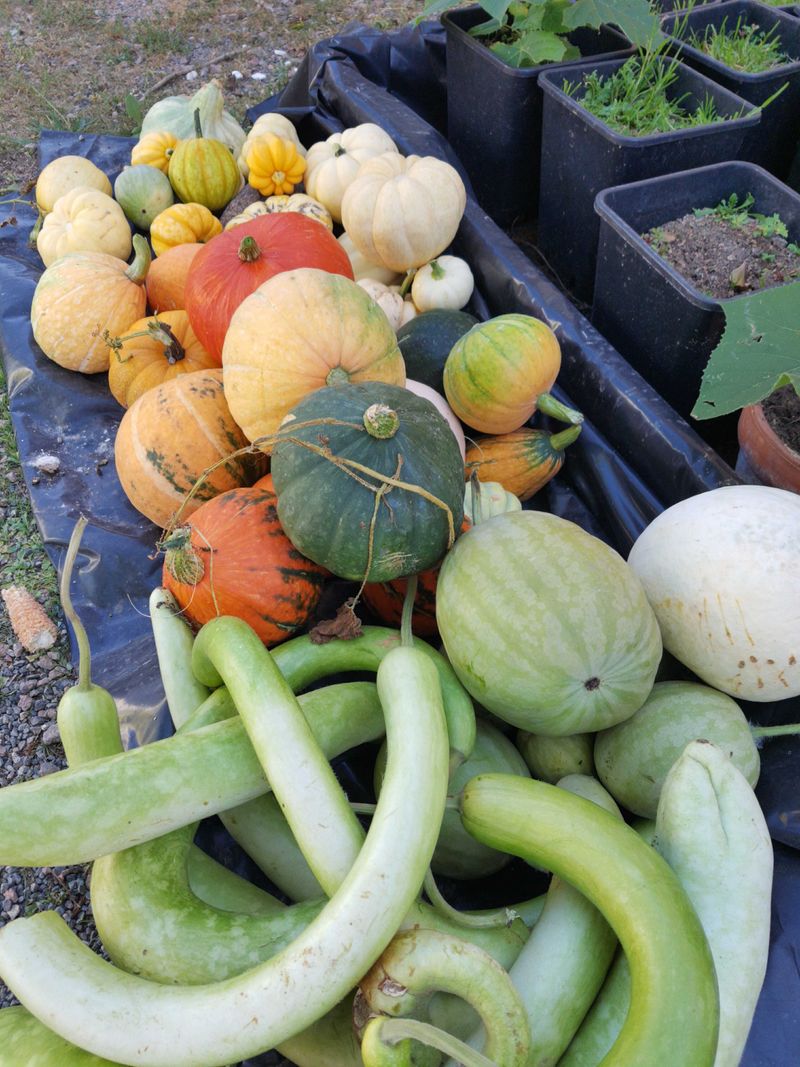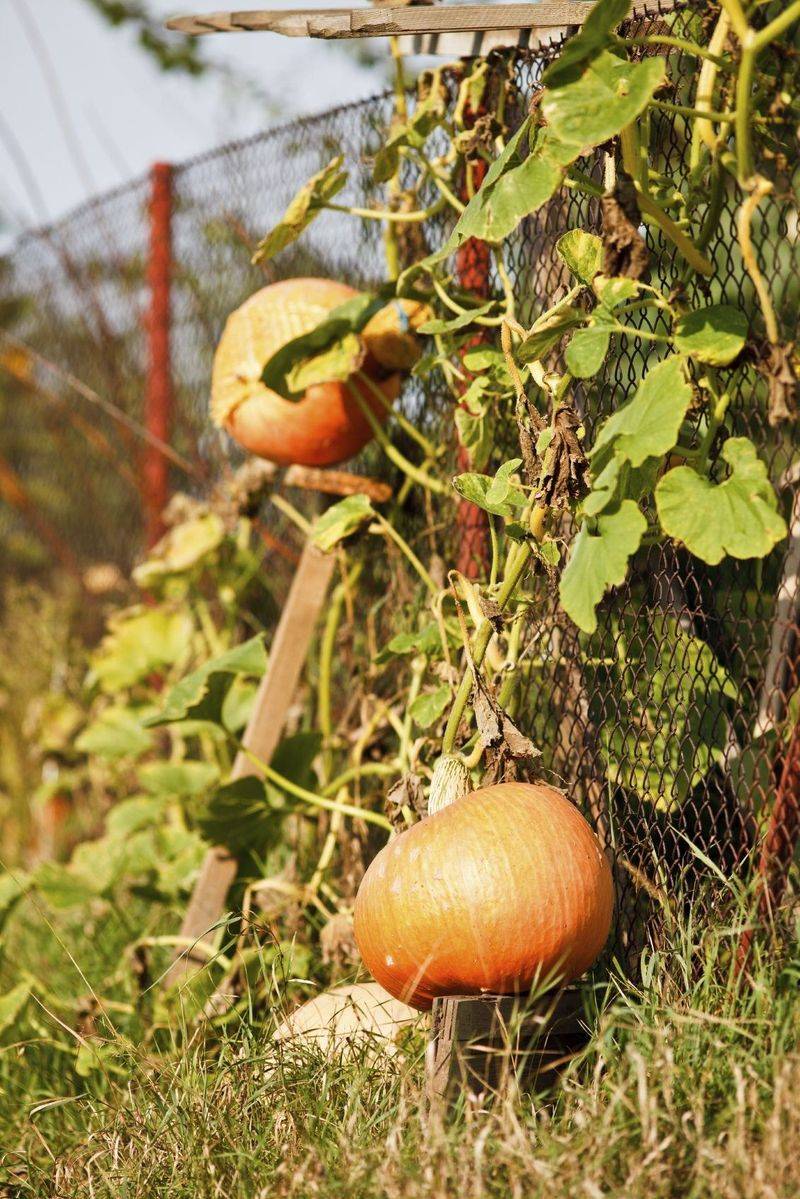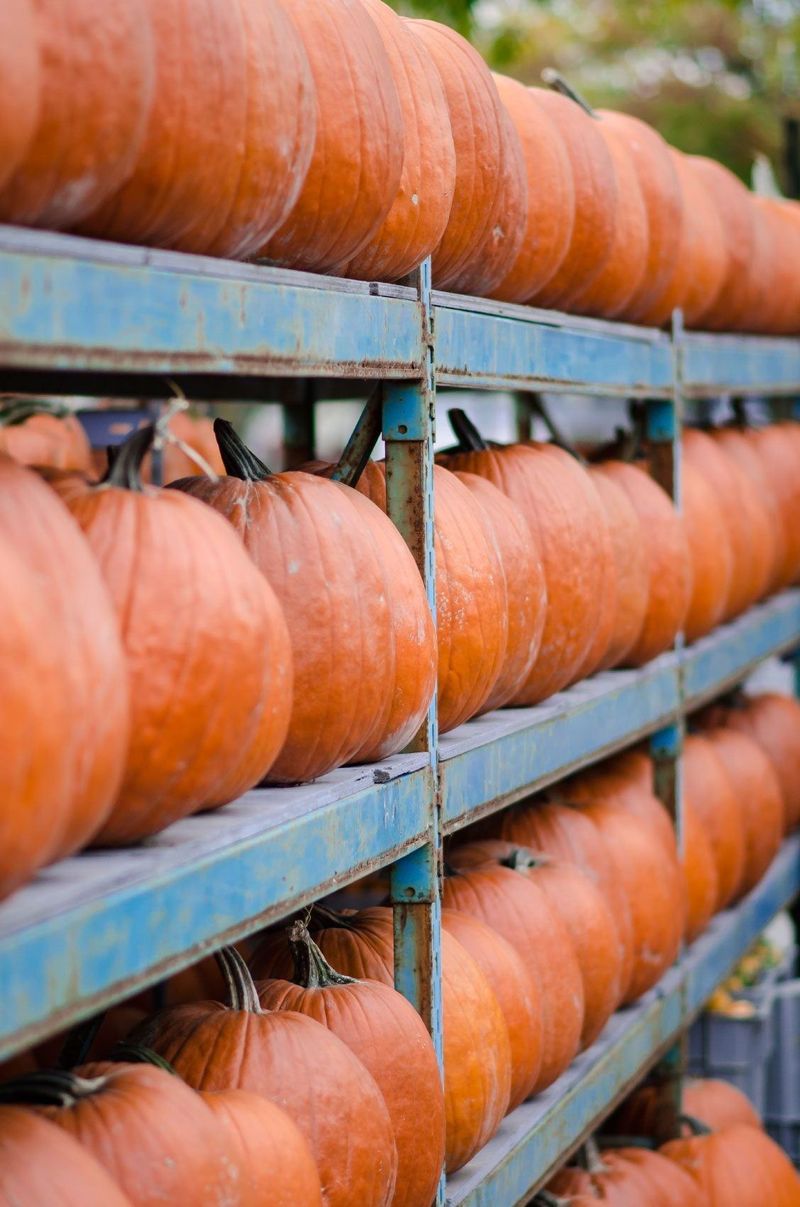If you’re like me, you probably think of pumpkins as nothing more than Halloween decor. But hold on. These quirky gourds have some seriously cool secrets!
I used to just carve ‘em and call it a day, but did you know pumpkins can grow to the size of a small car? Or that they’ve been around since ancient times, making them literally older than my grandma’s secret pie recipe?
I’ve had my fair share of pumpkin mishaps (ever try to move a giant one and regret it instantly?), but trust me, pumpkins are way more fascinating than you think!
1. Pumpkins are technically a fruit, not a vegetable!
Surprised? That orange ball of fun sitting on your porch is actually a fruit! Like tomatoes and cucumbers, pumpkins develop from the flower of the plant and contain seeds. How cool is that?
Despite commonly being called a vegetable, its botanical classification is quite the plot twist. The next time someone calls it a vegetable, you can drop this fun fact and watch their eyes widen in astonishment.
2. The world’s largest pumpkin weighed over 2,600 pounds.
Ever seen a pumpkin as big as a car? The largest pumpkin ever recorded tipped the scales at over 2,600 pounds!
This astonishing feat of nature was achieved by a dedicated grower in Belgium. Imagine the pie you could make with that! It’s like the Hulk of pumpkins, making ordinary ones look like mere mortals.
Pumpkin growing competitions are serious business and this massive winner is a testament to that.
3. Gourd plants belong to the same family as cucumbers, melons, and squash.
Gourds have some pretty fancy relatives. Belonging to the Cucurbitaceae family, they share their lineage with cucumbers, melons, and squash.
It’s a classy family tree if you ask me. These plants are known for their sprawling vines and diverse uses.
Knowing this makes me look at my salad a bit differently, appreciating the cool, interconnected world of plants. And who knew that gourd-related family reunions could be so diverse?
4. The word “pumpkin” comes from the Greek word “pepon,” meaning large melon.
Languages can be so neat, don’t you think? The word “pumpkin” traces its roots back to the Greek word “pepon,” which means large melon. Talk about a global citizen!
Through centuries, as the word traveled, it morphed from “pepon” to “pompon” in French, then “pumpion” in English, until it finally became the “pumpkin” we adore today.
It’s like the pumpkin’s very own world tour in the realm of language.
5. Pumpkins are native to North America, and their seeds date back over 7,000 years.
Long before pumpkin spice lattes, these seeds were thriving. Native to North America, pumpkins have been cultivated for over 7,000 years.
That’s some serious staying power! Our ancestors knew a good thing when they saw it. These ancient seeds have seen the rise and fall of civilizations, and now they grace our modern kitchens.
It’s amazing to think how pumpkins have been a part of the human story for so long.
6. The average American eats about 3.5 pounds of pumpkin per year.
Who knew pumpkins were a big deal past Halloween? On average, each American consumes about 3.5 pounds of pumpkin annually.
That’s a lot of pie and lattes! Though it might not seem like much, when you add it all up, pumpkins play a fun role in our diets.
Whether it’s in soups, desserts, or seasonal treats, these gourds sneak into our meals more than we realize. It’s a tasty tradition that keeps getting better.
7. Pumpkins are high in fiber, antioxidants, and vitamins A and C.
Looking for a health boost? Pumpkins are packed with fiber, antioxidants, and rich in vitamins A and C. They might just be the unsung heroes of healthy eating.
While they make delicious pies, their nutritional content is no joke. Eating pumpkin can help improve your vision and boost your immune system.
Who knew such a delicious treat could be so healthy? Next time you’re carving one, appreciate the goodness hidden inside.
8. Pumpkin seeds are a great source of magnesium, iron, and zinc.
Pumpkin seeds, or “pepitas,” are tiny powerhouses of nutrition. Loaded with magnesium, iron, and zinc, they’re a snack that packs a punch.
These little seeds are more than just waste from your jack-o’-lantern; they’re a crunchy, nutrient-rich treat. Whether roasted, salted, or plain, incorporating them into your diet can be beneficial.
So, next time you’re scooping out seeds, think twice before discarding these nutty gems.
9. The orange color of pumpkins comes from carotenoids, a type of antioxidant.
Ever wonder about that striking orange hue? It’s all thanks to carotenoids, a type of antioxidant. These compounds not only give pumpkins their fancy color but also offer health benefits.
While you admire their cool shade, you’re also looking at a powerhouse of nutrition. Carotenoids help protect your body against free radicals.
So, when you’re admiring a pumpkin’s color, remember, it’s not just a pretty face; it’s a nutrient-packed wonder.
10. Pumpkins were used as a remedy for snake bites and sore throats.
In the days of yore, pumpkins had medicinal magic. They were once used to treat snake bites and sore throats. While today’s remedies might have evolved, the historical use of pumpkins is astonishing.
Doctors of the past believed in their healing properties, offering them as cures for everything from snake venom to sore throats.
Next time autumn arrives, maybe you can humorously tell friends you’re stocking up on snake bite remedies!
11. Gourd is the generic term for pumpkins, squash, and other similar fruits.
Ever find yourself puzzled by the term gourd? It’s a catch-all for pumpkins, squash, and similar fruits. These plant buddies have diverse shapes, sizes, and uses, making the term a fun way to group them.
Gourds are like the Swiss Army knives of the plant world, used for everything from crafting to cooking. Their versatility is unmatched, and calling them gourds adds a layer of intrigue to their already cool reputation.
12. Pumpkins can be found in soups, pies, and even drinks.
Pumpkins aren’t just for spooky nights; they find their way into everything from soups to lattes. Their versatility knows no bounds.
While they might be an icon of October, these gourds excel in culinary creations year-round. Whether in a creamy soup, a classic pie, or a trendy latte, pumpkins add a delightful twist to any dish.
They prove that they’re more than just a seasonal star, but a foodie favorite.
13. Some pumpkins are so large that they are used in festivals and parades.
Roll out the orange carpet for these giants! Some pumpkins grow so massive they become the stars of festivals and parades.
Watching one of these behemoths roll by is a spectacle. Communities gather to celebrate these cool creations, making them the centerpiece of fun and festivities.
These extraordinary pumpkins prove that sometimes, bigger truly is better, bringing people together to marvel at nature’s grandeur.
14. The largest pumpkin-growing competition is held in Half Moon Bay, California.
California isn’t just about beaches and Hollywood. It’s home to the largest pumpkin-growing contest. Held in Half Moon Bay, this event attracts growers with green thumbs and dreams of glory.
Here, pumpkins push the limits of size, vying for the coveted title. The excitement of the competition is palpable, as growers showcase their colossal creations in hopes of taking home the prize.
It’s a celebration of dedication and pumpkin prowess.
15. The word “gourd” can refer to any of the hard-shelled fruits in the cucumber family.
Here’s a fun tidbit: “gourd” is a term for any hard-shelled fruit in the cucumber family. This broad definition encompasses a diverse array of fascinating fruits.
From decorative pieces to functional vessels, gourds have been used throughout history for various purposes.
Their unique structures make them versatile and intriguing. It’s amazing how one term can cover so much ground, giving a new perspective on everyday items.
16. Pumpkins have been used as masks long before Halloween traditions.
Before they lit up our porches, pumpkins had a different role. Used as masks in diverse cultures, these gourds were part of ceremonial and traditional practices.
The idea of carving faces isn’t as modern as you’d think! This fascinating history adds layers to our understanding of pumpkin carving.
It’s intriguing to consider how different societies have utilized these fruits, long before Halloween made them into glowing icons.
17. The tradition of carving pumpkins started in Ireland.
Ireland gave us more than just leprechauns; it gifted us the tradition of pumpkin carving. Originally, turnips were the stars of the show.
When Irish immigrants brought this practice to America, pumpkins took over. Their size and ease of carving made them the perfect choice.
It’s fascinating to trace the evolution of this tradition and see how something as simple as a pumpkin became a Halloween staple. Our festive carvings owe a nod to Ireland’s creative past.
18. There are over 45 different types of pumpkins grown in North America.
Talk about diversity! In North America alone, there are over 45 different types of pumpkins. From tiny decorative ones to giant showstoppers, the variety is astounding.
Each type brings its own flair to the table, offering a rainbow of choices for cooking, decorating, or growing competitions.
This cool spectrum showcases nature’s creativity, proving that pumpkins are more than just orange globes. Their diversity is as vast as it is impressive.
19. Pumpkin vines can grow up to 25 feet long.
These vines know how to stretch! Pumpkin vines can extend up to a whopping 25 feet. It’s like they have a secret mission to conquer gardens.
Their sprawling nature helps them soak up sunlight and nutrients, fueling those impressive gourds.
Watching them grow feels like observing a botanical marathon, where each twist and turn contributes to the grand finale. Nature’s way of sprawling pumpkins is both a sight to behold and a gardener’s wonder.
20. Pumpkin carving became a Halloween tradition in the United States in the mid-1800s.
A spooky transformation! Pumpkin carving as a Halloween tradition kicked off in the United States in the mid-1800s.
As Irish immigrants arrived, they brought their carving customs with them, turning pumpkins into festive masterpieces. This engaging practice quickly caught on, spreading across the nation.
It’s fascinating to see how a simple tradition evolved into an iconic part of Halloween celebrations, capturing our imaginations with every carved grin and flickering candle.
21. The earliest known pumpkin pie recipe dates back to the 17th century.
A timeless treat! The earliest pumpkin pie recipe dates back to the 17th century. Back then, pies were crafted with all sorts of fillings, and pumpkin was a favorite.
The evolution of this beloved dessert is a testament to its enduring appeal. From colonial kitchens to modern tables, pumpkin pie continues to delight taste buds across generations.
It’s incredible to think how this sweet tradition has stayed with us, adapting over time while retaining its core charm.
22. Pumpkins can be stored for up to three months in a dry place.
In the realm of storage, pumpkins are champs. They can keep for up to three months if stored in a cool, dry place.
This longevity is a boon for those who love to savor pumpkin-based dishes throughout the season. By keeping them fresh, you extend the life of your autumn harvest.
Next time you stock up, remember these storage tips to enjoy the goodness of pumpkins long after the fall festivities have ended.



